The Prairie Garden
In 2011 I visited the garden of one of my horticultural heroes, Piet Oudolf, in Hummelo in the Netherlands.
On returning to Grasse, I decided to pay homage to his ethos and design by creating my own prairie garden, composed entirely of herbaceous perennials and grasses.
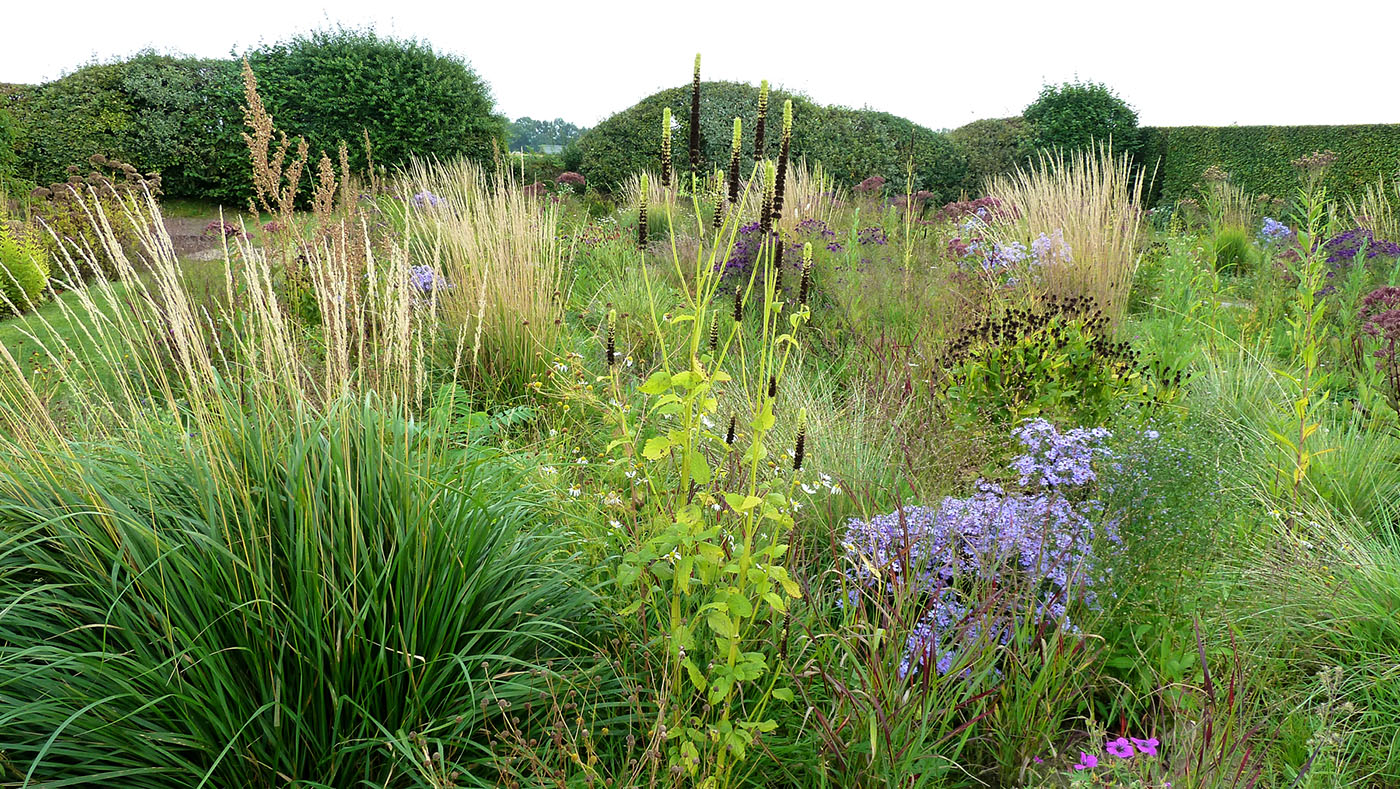
The main factor leading to this decision was to find a way of reducing the amount of strimming we need to do each year to maintain our wilder areas. The theory of the prairie garden, once it is established, is that it should only need to be cut down once a year at the end of winter. Of course, in the first two or three years, a certain amount of weeding is vital to let the newly introduced plants develop.
Our interning garden assistant at the time, Gareth Richards, drew up the planting plan. At first he said the idea was crazy, as this style is usually for the more temperate areas of the world. However, we had already discovered two grasses that work well here – Nasella tenuissima (formerly Stipa tenuissima) and Miscanthus nepalensis, and felt that this idea might just take off.
This is what he wrote on the subject:
A Prairie Garden, in Provence?
Prairie Gardens take their inspiration, obviously, from the Great Plains of North America - huge swathes of grassland full of a range of flowers Europeans could, until relatively recently, mostly only dream about. These landscapes inspired the ‘New Perennials’ movement that has emerged in Northern Europe over the last twenty years. It’s naturalistic, a far freer, a more sustainable look for the 21st century - compared to traditional colour-themed mixed borders, staked, over-fed and overwatered. Here you pick a limited palette of appropriate plants, flowering perennials and grasses, set them out en masse, stand back and watch the spectacle unfold.
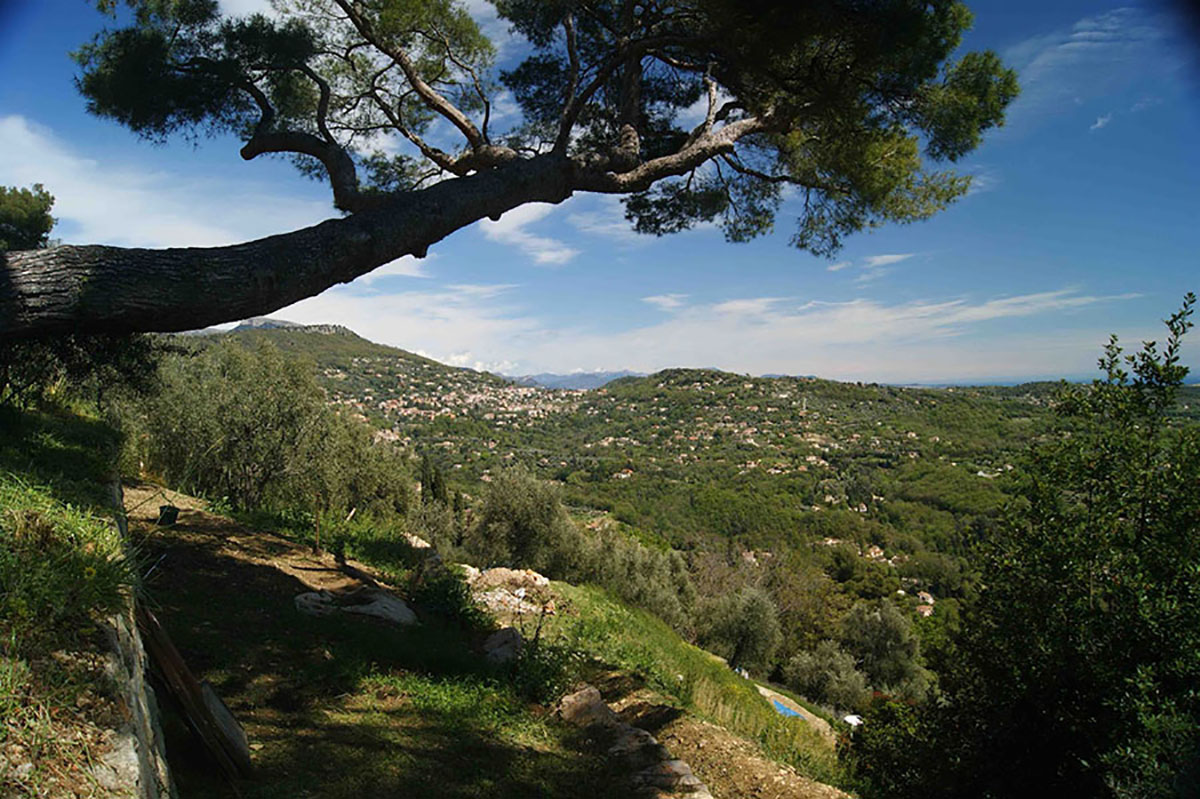
So how to translate it to a setting within sight of the Mediterranean, (i.e. drought from June to September), with no irrigation? Many classic prairie plants like Echinacea are drought tolerant but not really drought loving. We needed plants that would actively thrive. Time to look at the ground beneath our feet.
The wild plants locally gave me some great clues - wild verbascums, poppies and sages all thrive on this dry alkaline soil and have cultivated relatives that are worth looking at. The dreaded plantains, even, have a cultivated cousin - Plantago major ‘Rubrifolia’ - a fantastic foliage plant the colour of red wine which will make a great contrast to the tawny colours of late-season grasses. And it doesn’t even mind being trodden on occasionally!
So, time to get weeding. It took two of us three whole days of pulling and digging to get the site clear...
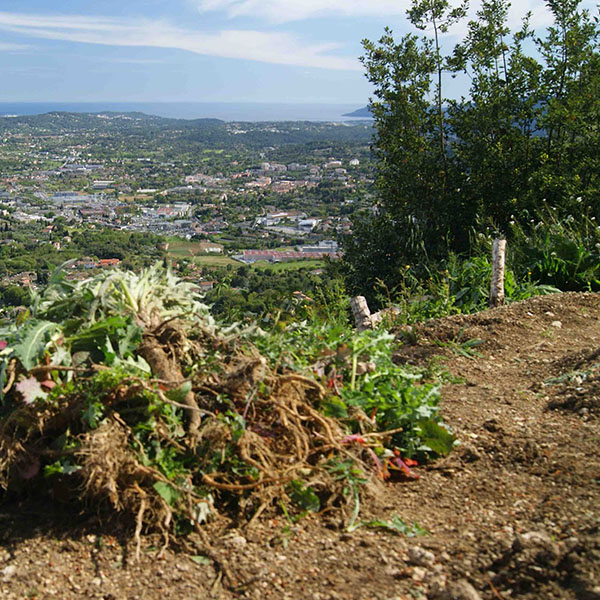
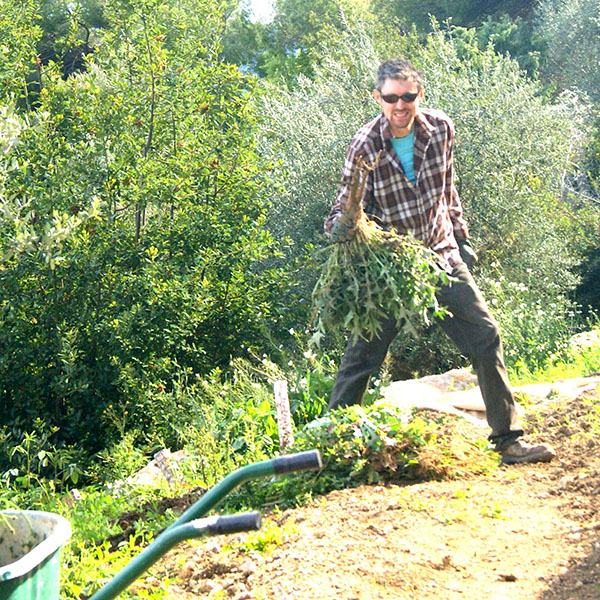
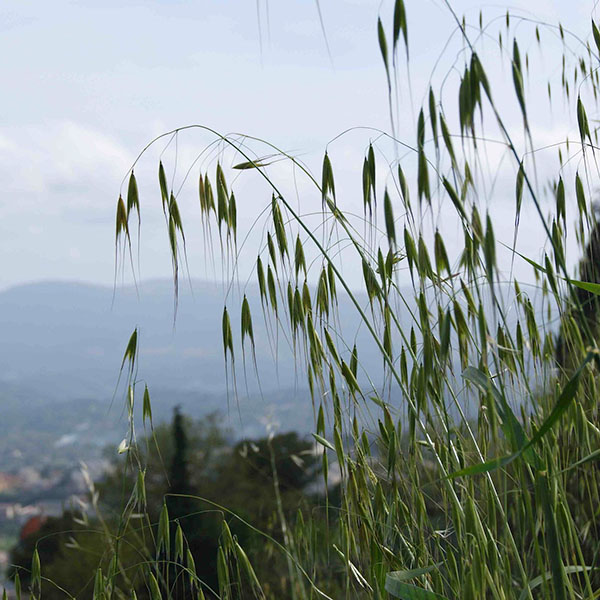
Setting out our Prairie Garden
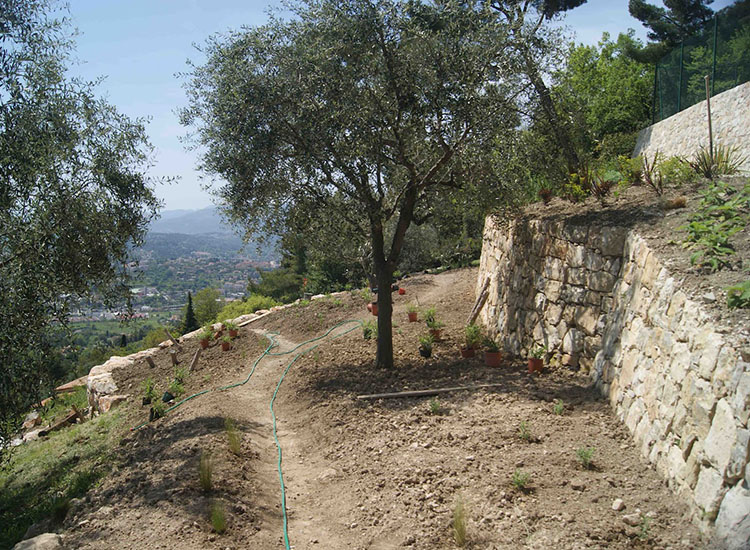
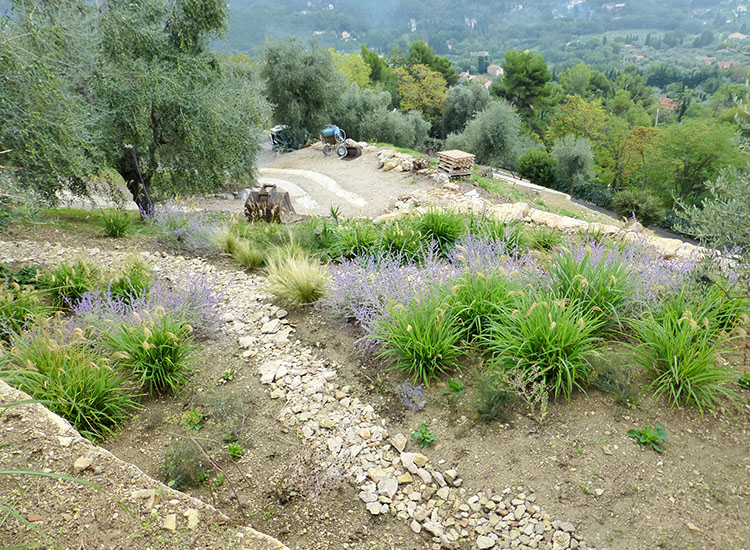
By September, Gareth was able to report:
'No Bison Yet! However, our 'Prairie Garden' really has been a tale of the unexpected. First came its birth from a weed-infested terrace - thistles with shocking roots almost as thick as a wrist; to the sudden discovery that the soil varied from clay so tough a potter might struggle with it, to almost pure sand.'
Inspiration
Over the years of tending the terraces at La Mouissone, we have often considered different ways to avoid the need to strim the wilder areas so frequently. Strimming is necessary to keep a clean appearance, and in some parts it even acts as a fire prevention measure. A down-side of the practice is that it also limits the growth of some very acceptable wild flowering plants.
Occasionally the natural vegetation has been allowed to grow to full height, and it is noticeable how many different grasses are present. This led me to think about Prairie Gardens, which have been very fashionable in gardening circles in Northern Europe over the last couple of decades.
One of the most famous creators of Prairie Gardens, or naturalistic planting, is Piet Oudolf. When I visited his garden in Hummelo, Holland, I knew that this would look superb on the upper reaches of the garden we have nicknamed 'Machu Picchu'.
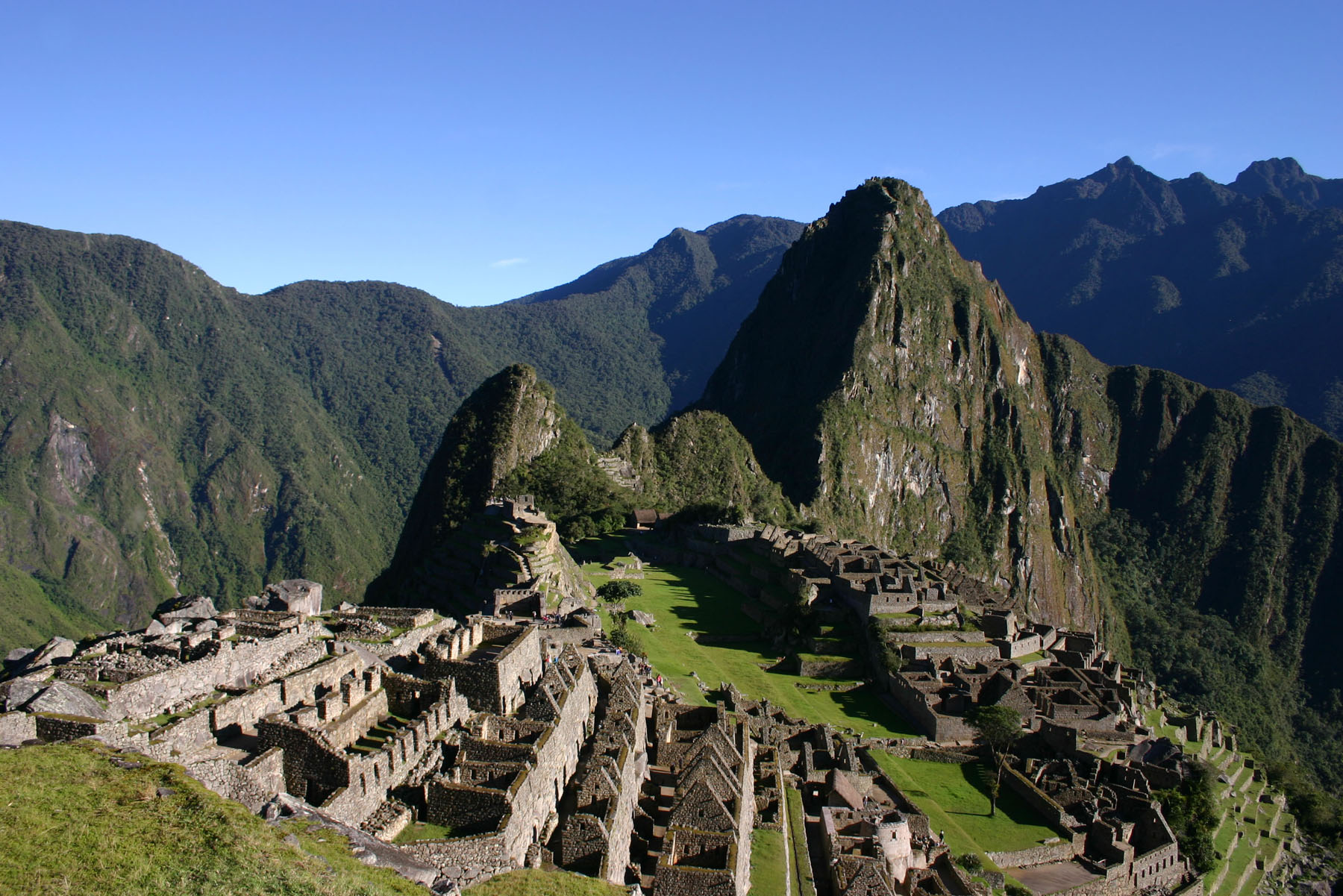
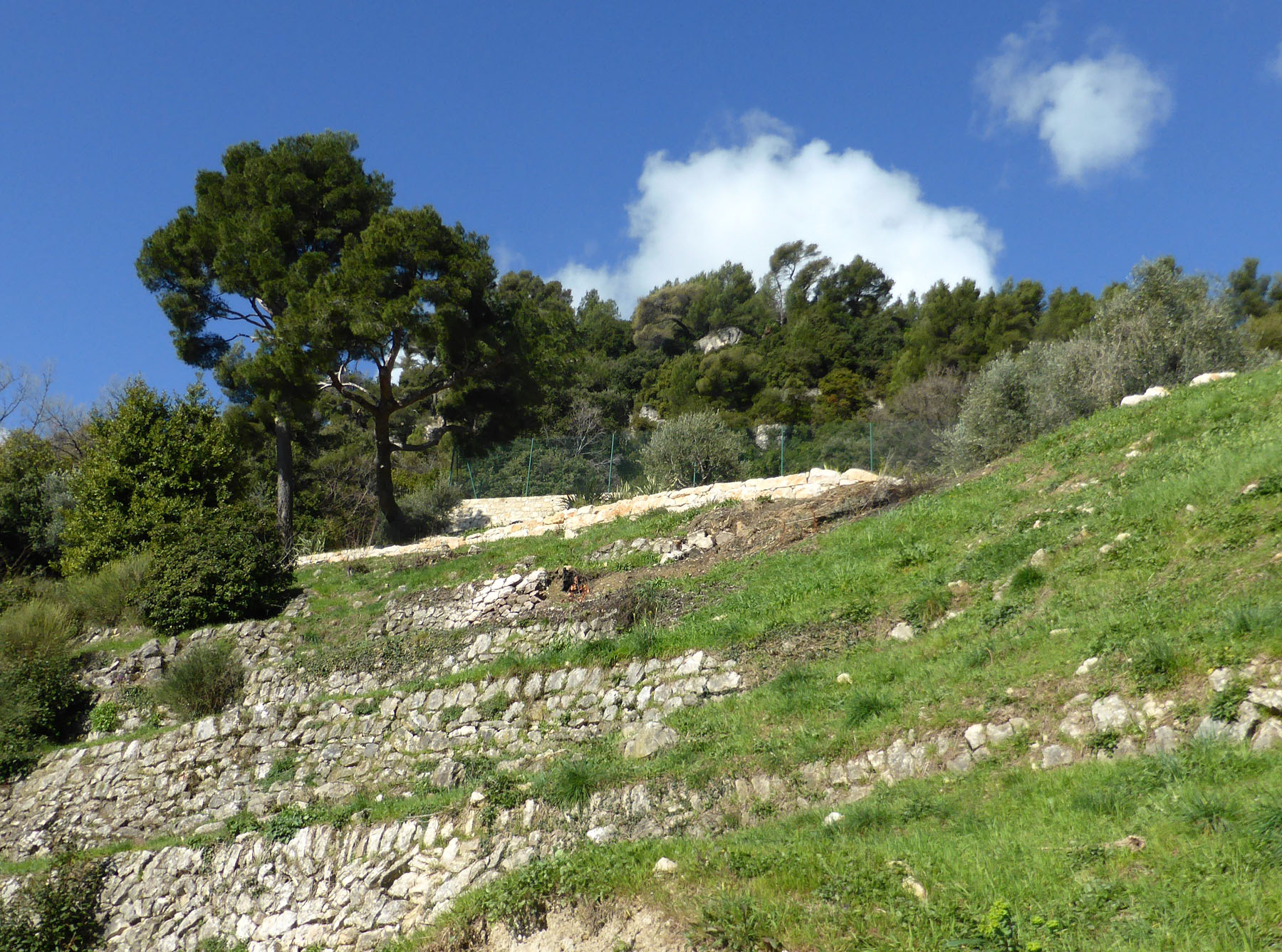
Dan Pearson wrote in The Observer:
'He has developed a stability in his plantings, choosing plants that are happy in each other's company, are well adapted to their environment and have the ability to go the long haul. Self-seeders are consequently minimised and perennials are chosen for their ability to endure without the need for regular division. He also believes it is important to use plants that have an "afterlife" and are good once they are over, which in turn makes the plantings better for ecology and insect life.'

The Prairie Garden in 2018
We extended the garden, doubling its size in 2015. The extension continues some of the existing planting and gives the opportunity for some new ideas. It includes a curved stone wall, with seating for visitors – ideal for an early evening glass of wine and the panoramic view.
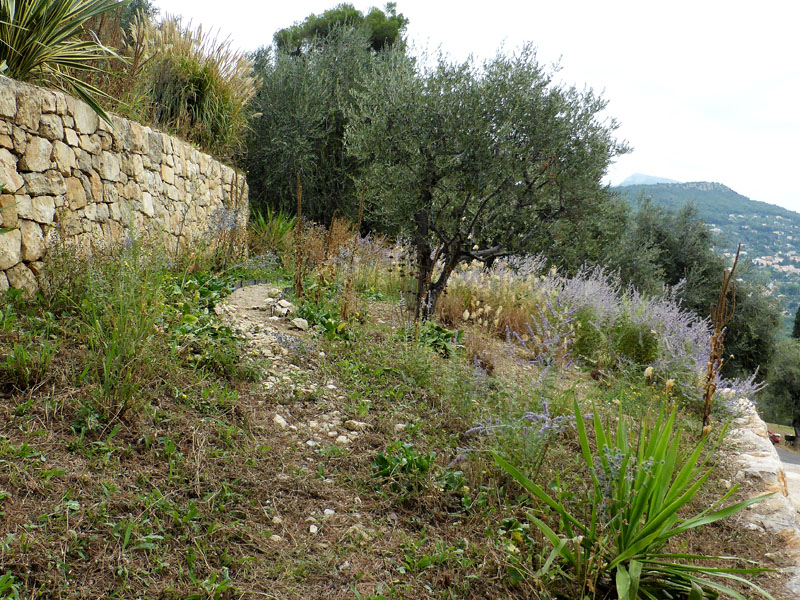
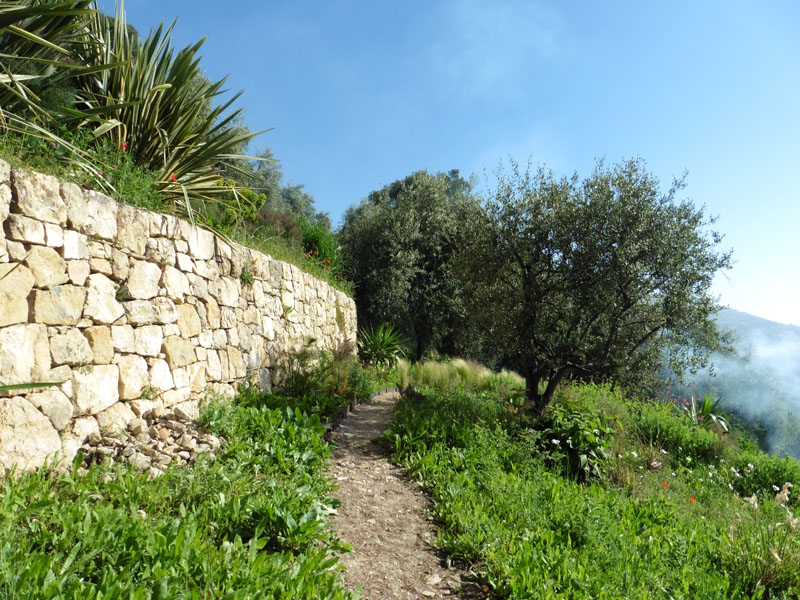
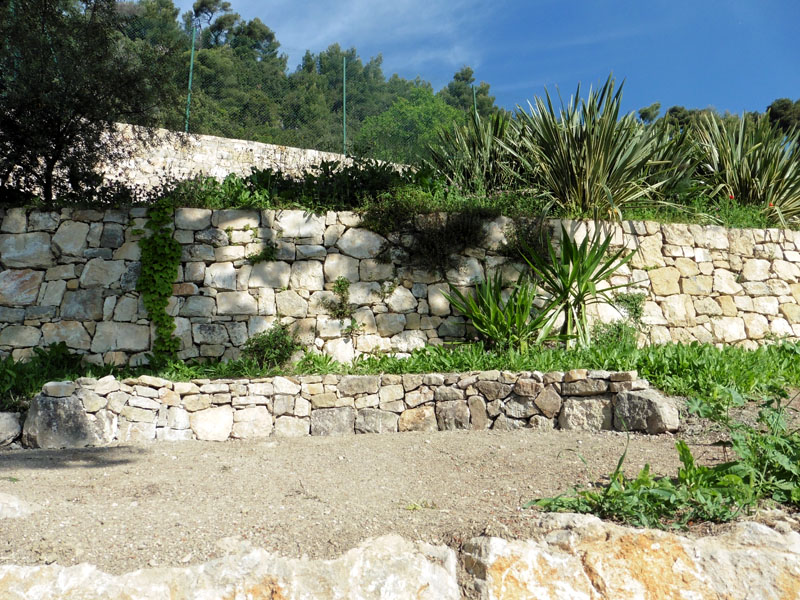
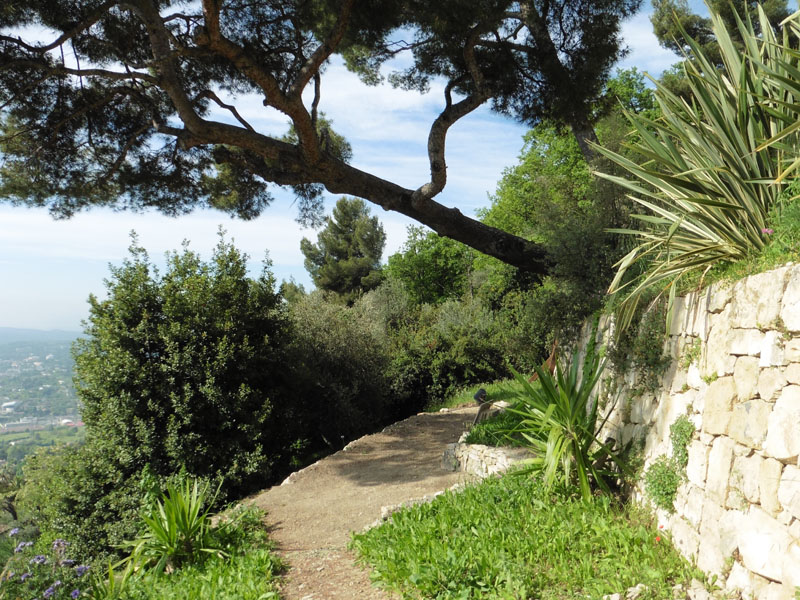
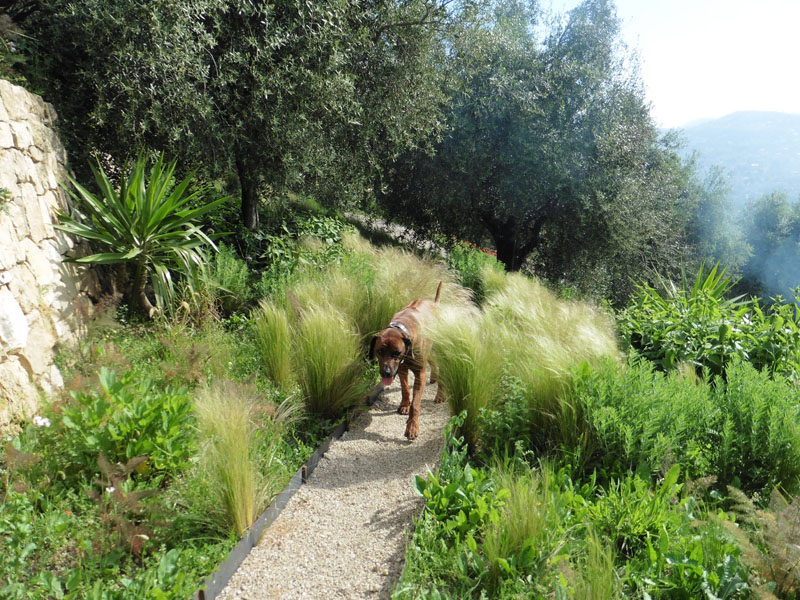
We have had successes and failures, of course, in our plant choices. Some of the plants are rather too invasive – such as the bronze fennel and Eryngium planum. Others we have welcomed - the self-seeding Nasella tenuissima and the spreading Phlomis russelliana.
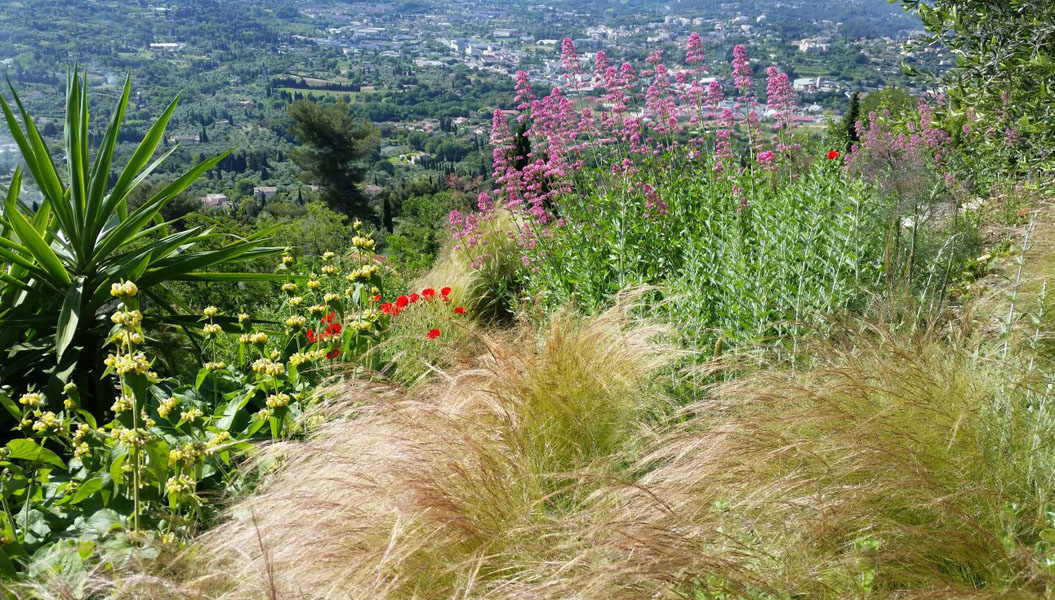
We have also been learning more about ‘naturalistic planting’ and ‘plant communities’ which develop when the area is not over-managed. (References – meadow and natural planting experts - James Hitchmough, Nigel Dunnett, Sarah Price)
Two or three years ago we extended our lavender plantation to merge gently with the lower edges of the Prairie Garden, and some of the Prairie Garden subjects are gradually self-seeding down into the top reaches of ‘Machu Picchu’.
In an effort to have more than one season of interest, we have selected new plants and bulbs to appear earlier and later in the year. It is also important to encourage local plants to self-seed in the area. If it looks good, we leave it in. Gardening friends help to select the ‘keepers’.
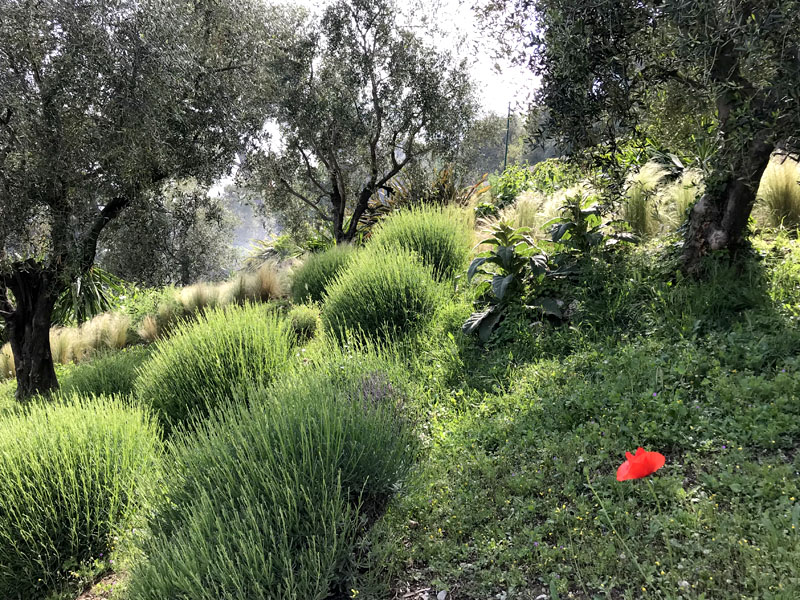
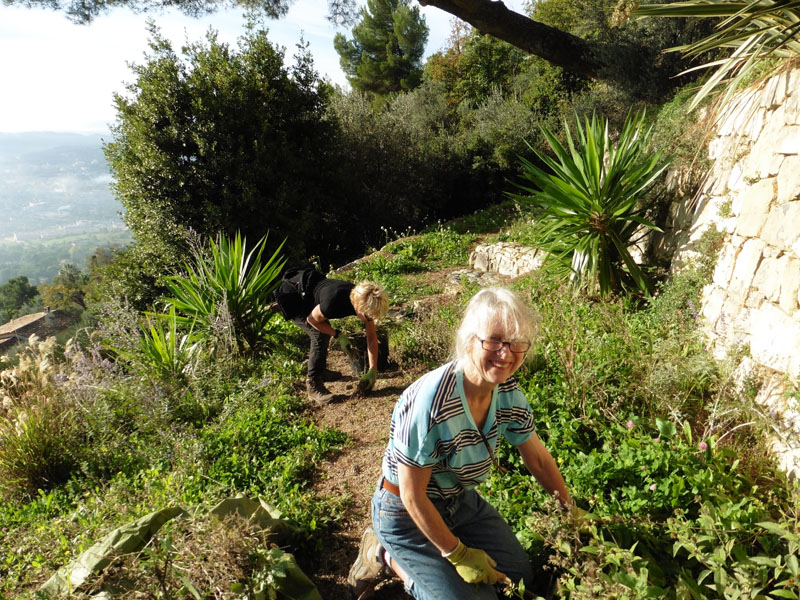
We have added new grasses and perennials, many grown from seeds and cuttings:
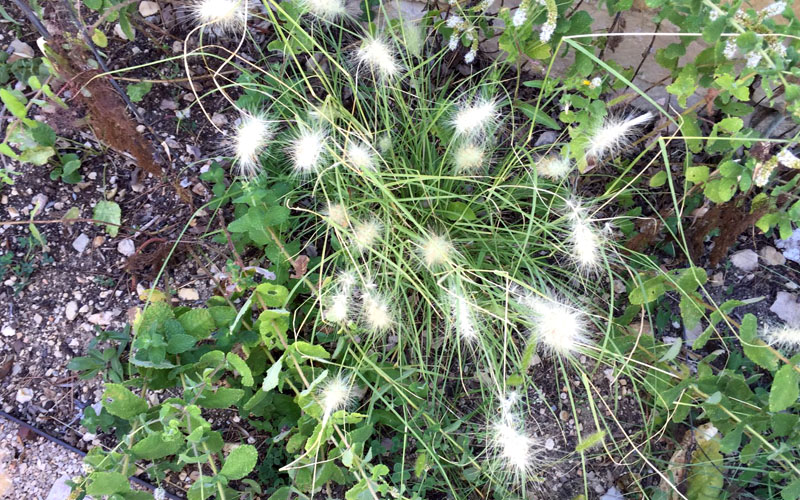
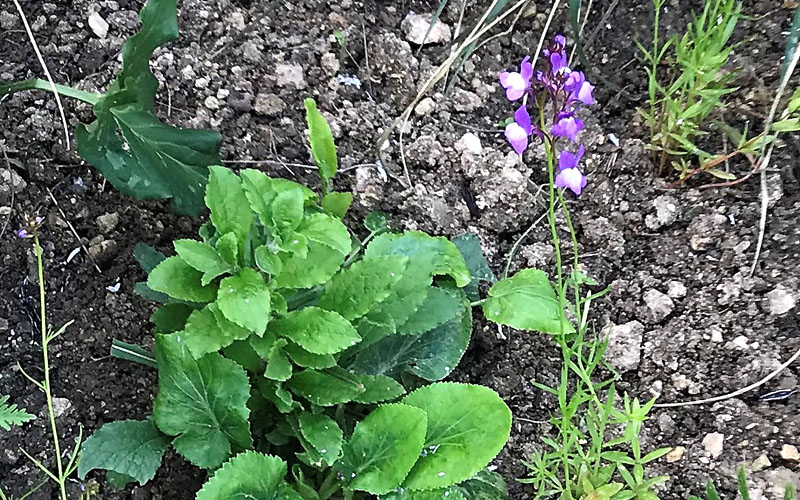
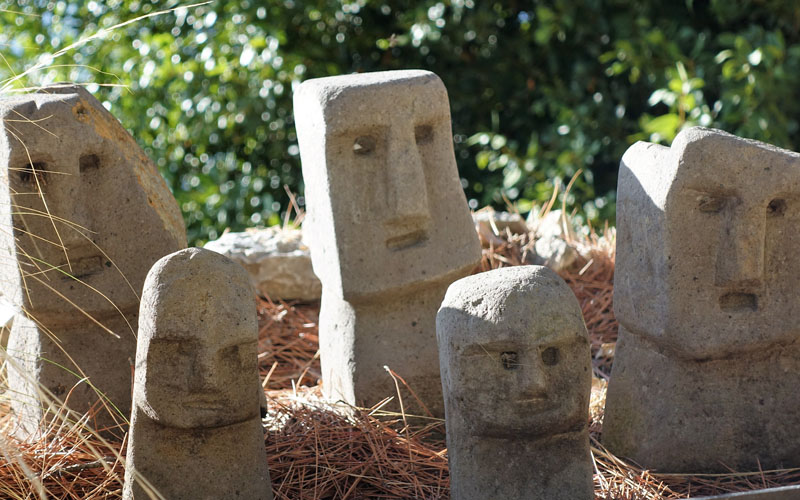
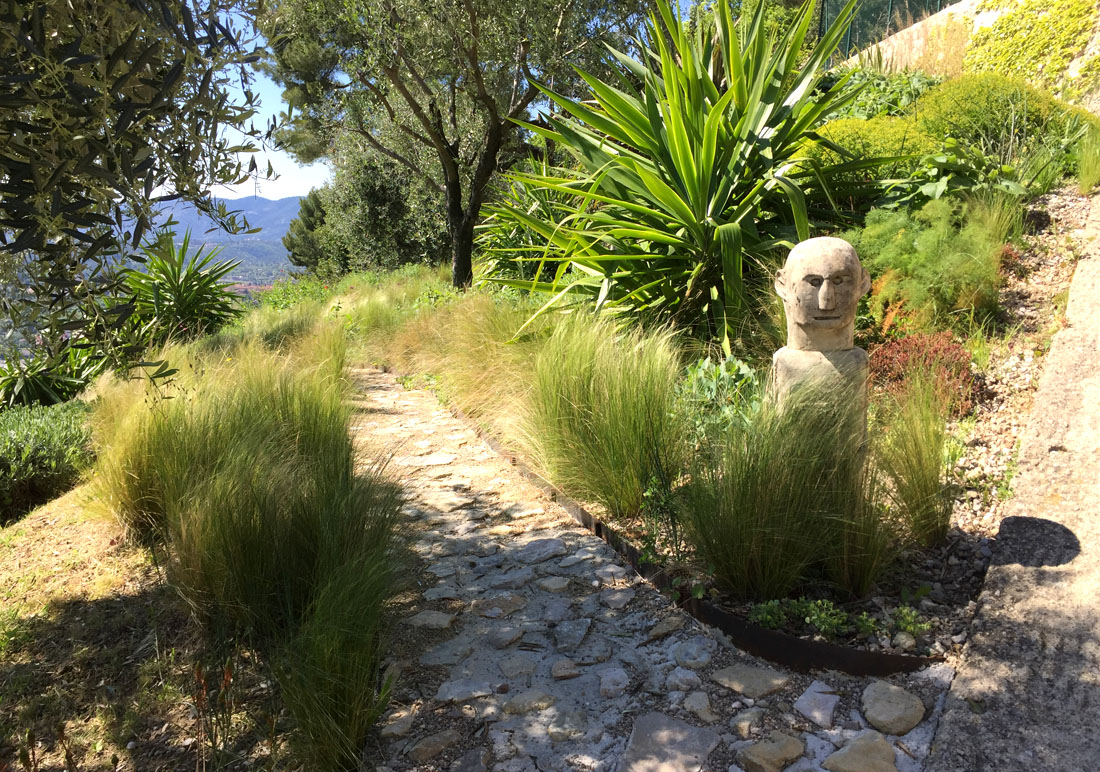
Plant List
Grasses
- Andropogon scoparius
- Achnatherum calamagrotis - Silver Spike Grass
- Briza maxima - Quaking grass
- Briza media
- Calamagrostis × acutiflora 'Karl Foerster'
- Leymus arenariana
- Miscanthus sacchariflorus
- Miscanthus sinensis 'Silberfeder' (Elephant Grass)
- Nasella tenuissima (syn. Stipa tenuissima) - extremely fine textured grass with fresh green foliage turning gold in winter
- Pennisetum macrorum
- Sporobolus heterolepis
Perennials
- Achillea ssp.
- Amaranthus 'Autumn Palette'
- Artemisia absinthium 'Lambrook Mist'
- Berkheya purpurea
- Bulbine bulbosa
- Cantananche caerula
- Centaurea ruthenica - rare plant from eastern Europe
- Echinacea pallida
- Echinacea purpurea 'White Swan'
- Echinops ritro
- Echinops microcephalus
- Eryngium bourgatii
- Eryngium campestre
- Eryngium planum - Sea Holly with open umbels of prickly steel-blue flowers. A very hardy species, small flowered. Attractive to butterflies
- Euphorbia amygdaloides robbiae (Mrs. Robb’s bonnet)
- Euphorbia amygdaloides 'Purpurea'
- Euphorbia x martinii (Martin’s Spurge)
- Euphorbia myrsinnites
- Euphorbia sikkimensis 'Crug Contrast'
- Euphorbia characias subsp. wulfenii 'Purple and Gold'
- Foeniculum vulgare atropurpureum (bronze fennel) - statuesque, self-seeding, good for colour and structural contrasts
- Geum triflorum
- Hesperaloe parviflora
- Iochroma australe
- Kniphofia sp.
- Linaria 'Canon Went'
- Linaria maroccana 'Lilicia Violet'
- Lithodora zahnii
- Perovskia abrotanoides 'Silvery Blue'
- Perovskia atriciplifolia 'Blue Spire' - white stems and electric blue flowers
- Perovskia 'Filigran'
- Phlomis russeliana - strong upright bobbly seed-heads, dark brown over winter, long lasting
- Phormium 'Bronze Baby'
- Phormium tenax
- Phormium tenax variegata (New Zealand Flax)
- Pulsatilla vulgaris
- Rudbeckia fulgida 'Goldsturm'
- Sedum moranense
- Sedum spectablie
- Sedum 'Matrona' - flattish heads add solidity and their dark colour stands out well
- Verbena hastata
Bulbs
- Allium 'Purple Sensation'
- Allium sphaerocephalon - drumstick allium with egg-shaped flowers in summer that start off green, then bloom and develop to pink and then clover red-purple
- Charybdis maritima (syn. Urginea maritima) - (Crusader’s spears, Sea Onion)
- Crocus sativus (Saffron crocus)
- Fritillaria persica
- Gladiolus tristis
- Liatris spicata
- Triteleia laxa 'Corrina'
- Tulipa saxatilis
Others
- Hedera pastuchovii 'Ann Ala'
- Parthenocissus tricuspidata
- Punica granatum 'Mollar de Elche' (Pomegranate)
- Solanum lanceolatum
- Verbascum olypicum - strong spires of yellow flowers from a basal rosette of felty grey leaves. Thrives in dry alkaline soils
- Yucca aloifolia - the type species for the genus Yucca. Commonly known as "Spanish bayonet", "dagger plant" etc.
Supplier List
- Pepiniere l’Armalette: Sillans-les-Cascade, France
www.pepiniere-armalette.fr - GAEC Senteurs du Quercy: Escamps, France
www.senteursduquercy.com - Chilterns Seeds: Wallingford, Oxfordshire UK
www.chilternseeds.co.uk - Jungle Seeds: Watlington, Oxfordshire UK
www.jungleseeds.co.uk - Woottens of Wenhaston: Wenhaston, Suffolk UK
www.woottensplants.com - Sarah Raven: Marlborough, Wiltshire UK
www.sarahraven.com - Broadleigh Bulbs: Taunton, Somerset UK
www.broadleighbulbs.co.uk